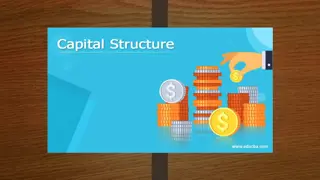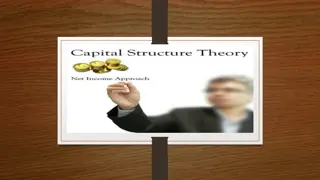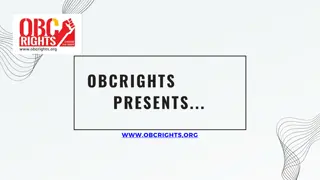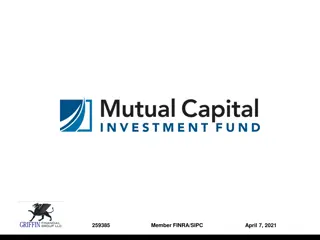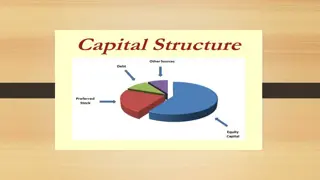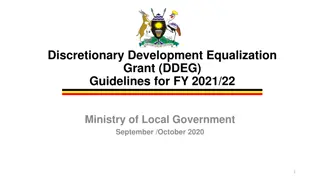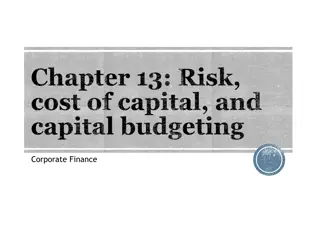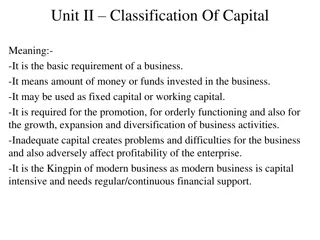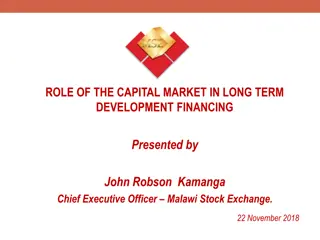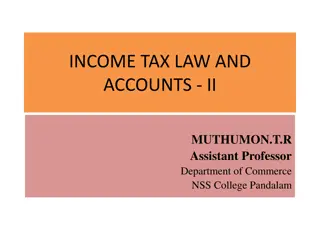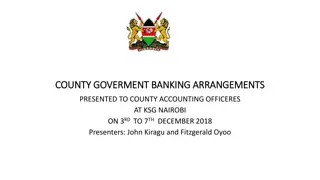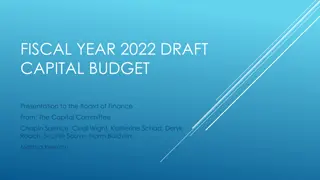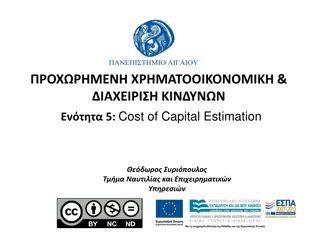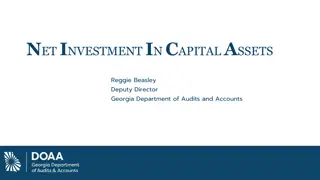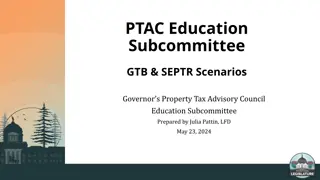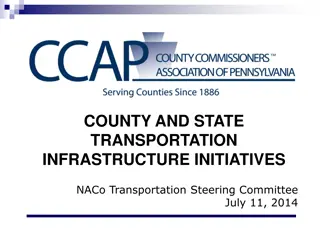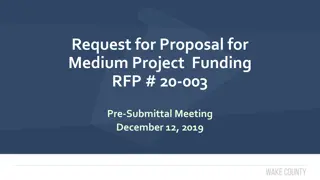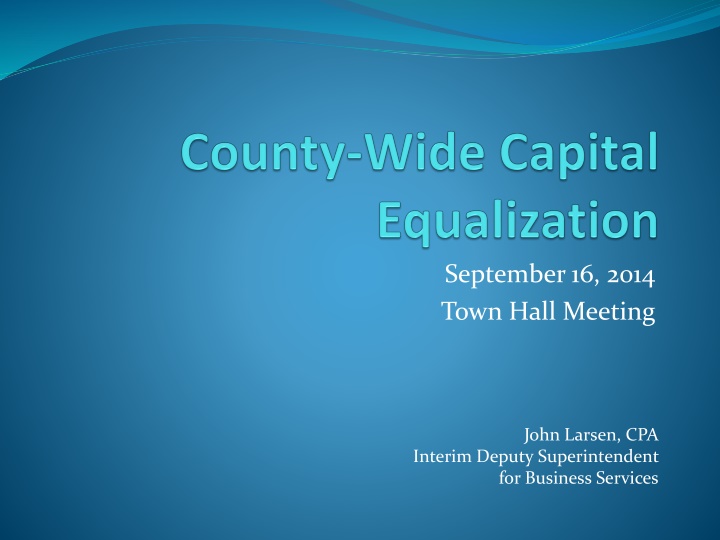
Property Tax Revenue Neutrality in Utah's School Districts
Explore the dynamics of property tax revenue neutrality in Utah's school districts, where assessed values and tax rates are adjusted to keep overall revenue stable. Learn about the impact on districts, taxpayers, and the Sunset Bill that ended the program in 2016.
Download Presentation

Please find below an Image/Link to download the presentation.
The content on the website is provided AS IS for your information and personal use only. It may not be sold, licensed, or shared on other websites without obtaining consent from the author. If you encounter any issues during the download, it is possible that the publisher has removed the file from their server.
You are allowed to download the files provided on this website for personal or commercial use, subject to the condition that they are used lawfully. All files are the property of their respective owners.
The content on the website is provided AS IS for your information and personal use only. It may not be sold, licensed, or shared on other websites without obtaining consent from the author.
E N D
Presentation Transcript
September 16, 2014 Town Hall Meeting John Larsen, CPA Interim Deputy Superintendent for Business Services
Revenue Neutrality Assessed Value (AV) x Certified Tax Rate (CTR) = REVENUE If AV goes up, CTR goes down, so revenue stays the same. Property Tax Revenue is not allowed to change unless: District goes through Truth In Taxation (TNT) Legislature changes the Basic Rate (WPU offset) Voter approved debt service obligations (bond) New developments on the tax rolls
Truth In Taxation Truth in Taxation (TNT) is the process in Utah wherein a government entity can reset its tax rate. Allows entity to capture lost inflation dollars not accounted for in the Certified Tax Rate setting process Allows entity to seek additional revenues
Brief History Jordan / Canyons split: Jordan 59% of students (and growing) but only 42% of assessed valuation* As originally envisioned, 2008 Senate Bill 48 created County-Wide Capital Equalization program to provide Jordan needed funds to build schools Required each Salt Lake County school district to levy 0.0006 tax where the proceeds would be redistributed 25% on enrollment growth and 75% on enrollment count *See 2008 arbitration ruling
Unknown Provision 2008 Senate Bill 48 on its 3rd substitution inserted language that required the State Tax Commission to apply Revenue Neutrality* Required the districts tax rates be adjusted up or down based on the amount contributed or received (increment) Jordan received, so our tax rate was lowered Other districts contributed, so their rate increased *Utah Code 59-2-924.3
Result Revenues remained neutral Jordan SD did not benefit financially Jordan SD taxpayers paid a lower rate Other districts did not get harmed financially Other districts taxpayers paid a higher rate Instead of redistributing a financial benefit, it redistributed who paid the taxes.
How does it end? In 2010, Senate Bill 175 sunsets the program effective December 31, 2016 (Fiscal Year Ending June 30, 2017) SB 175* did not say how the Tax Commission was to end it, just that it would end. * See 63I-1-253 (7-8)
Need Clarification Jordan needs the Legislature to clarify how this should end. Without clarification, someone could argue the rates stay where they are on December 31, 2016
Fairness If rates stayed where they are on 12/31/2016: Jordan s tax rate, being artificially low, would lose roughly $10M revenue, forcing Jordan through TNT to keep the very revenues we went through TNT in 2009 to receive. Hurts the very district everyone was trying to help! Other districts tax rates, being artificially high, could gain roughly $10M revenue without having to go through TNT.
Suggested Action The program should end the same as it began by applying the Revenue Neutral principle. This would allow Jordan s rate to float up, without TNT, due to the loss of increment. Other districts rates would float down with the gain of the increment. In other words, do the exact opposite of what happened in 2010.
$50,000,000 2017-18 Scenario 1: Without Legislative intervention, JSD revised tax rate held artificially low. Conceptual Illustration of Capital Equalization Program $45,000,000 Revenue expected but not received $40,000,000 2017-18 Scenario 2: With Legislative intervention, tax rate restored to 2009 Truth In Taxation Hearing equivalent (back to square one). $35,000,000 $30,000,000 2009 Truth In Taxation Hearing Tax Level Cap Eq Revenue $25,000,000 JSD Rate Revenue $20,000,000 $15,000,000 $10,000,000 $5,000,000 $- 2009-10 2010-11 2011-12 2012-13 2013-14 2014-15 2015-16 2016-17 2017-18-#1 2017-18-#2
Assessed Valuation Per Student Park City $2,489,842 Rich $1,727,924 Daggett $1,489,106 S.Summit $993,060 Kane $992,177 N.Summit $958,614 Grand $917,129 Emery $858,800 Millard $786,548 Uintah $715,956 Beaver $697,212 Salt Lake $696,379 Wasatch $658,700 Garfield $654,288 Carbon $581,415 Wayne $527,335 Duchesne $470,865 Canyons $434,298 Murray $427,475 Washington $387,144 San Juan $344,129 Morgan $341,464 STATE AVG $338,879 Iron $337,108 Juab $334,562 Piute $333,733 Box Elder $328,273 Logan $316,844 Granite $303,051 Sevier $302,876 Provo $302,746 N.Sanpete $269,328 Jordan $263,197 Ogden $246,605 Weber $246,028 Tooele $235,555 Davis $232,944 Cache $231,056 Tintic $220,370 Alpine $205,492 Nebo $187,519 S.Sanpete $170,100 $0 $500,000 $1,000,000 $1,500,000 $2,000,000 $2,500,000 $3,000,000



